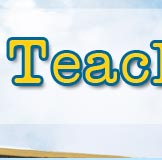VOCABULARY DEVELOPMENT
GUIDELINES ON HOW TO READ ALOUD TO PRIMARY GRADE STUDENTS
- Choose the book to be read carefully. The story chosen should be interesting to both the students and the teacher. The book should be “challenging”, which means that there are a number of words in the story unknown by at least half of the class. When you ask students to raise their hands as you read a new word, approximately half of them should raise their hands indicating their understanding of the word. The goal is to move those children with below average vocabulary to acquire vocabulary known by children with above average vocabulary.
- The reader should preread the story and select the words for explanation that will be highlighted during the reading aloud session. The selected words should be chosen from a sample including grade appropriate words. They should highlight words that are key to understanding the story. Words that are central to the story idea should be chosen. Teachers can also use word lists comprised of familiar words to determine what words students at each grade level are likely to know (see Biemiller, 1999; Chall & Dale, 1995). For primary grade students, teachers should not try to explain really hard words. In choosing the words for explanation, teachers need to recognize that the same word may have multiple meanings and that instruction of these words should be developmentally sensitive. For example, the word “lean” may hold multiple meanings. Grade 4 students understand the sentence “Lean the rake against the wall.”, but they fail to appreciate the meaning of “Lean on me when you have trouble.”, which reflects a grade 8 understanding. Primary grade students may understand the word “warm” as reflecting temperature, but they may not understand that it also conveys being affectionate.
- At the outset, the reader should relate the story to be read to the students' prior knowledge by asking a few questions. Create a bridge to the story. For example, read the title of the story and ask students what they think the story will be about. (Limit the number of responses.)
“This story takes place in X. Does anyone know where X is?” “The title of this story is 'My personal journey'. What is a journey? Children answer … So a journey is a trip you take. Let's all say journey.”
When new words are learned in context, they are retained more readily.
- Reader should announce the name of the author and the name of the illustrator.
“The author or the person who wrote this story is …” Have we read any other stories that X wrote?” “The illustrator or the person who drew the pictures in this story is Y.”
- Reader should encourage active listening by giving students something to look for.
“There will be three cats in this story. Listen for their names and count on your fingers when you hear their names.”
“Listen to see in your mind ….”
- Read with emphasis and enthusiasm. Make eye contact and engage and involve the students.
- Read the story aloud once without interruption.
- Research has shown that story pictures often interfere with the development of students' reading comprehension. Pictures may be misleading, misconstrued and distracting. Thus, readers should use the showing of story pictures judiciously. The reader should hold off showing story pictures until after students have constructed meaning (or shared the gist of the story) from what has been read.
- Rereading the same story is critical. Reading the same book several times leads to much more word learning than reading several different books once. Each repeat reading is helpful. In the second and third reread, more difficult words from the story can be introduced, and comprehension questions can be introduced on the second and third rereads. Comprehension can be emphasized with questions, children's retelling and dramatization on the rereads.
- After the initial uninterrupted reading, depending on the length of the book, the reader can interrupt the rereading 3 to 4 times to explain words, usually on different days. Try not to interrupt more than once every 75 - 100 running words while reading. With very young children, try not to interrupt more than once a page while reading. Since books for young children are typically short, two such books have to be read to be able to explain 10 words a day. Students in kindergarten need to encounter 3 to 6 new words a day in stories. The same story should be read again for at least 2 or 3 days, explaining other new words that appear. The goal should be learning 12 to 15 new words every week.
- Keep word explanations brief. No more than 1 or 2 sentences should be used to explain a word in context, as the following example illustrates. (See below for further detailed examples.)
- Identify key unknown words.
- Give definition (keep this brief): “X means …”
- Have students generate an example of the word. Give prompts, if required. “Think of something that …” “Start your sentence with …”
An example offered by Beck and McKeown (2000):
In this story, Lisa was reluctant to leave the playground. Reluctant means you are not sure whether you want to do something. Say the word reluctant with me: RELUCTANT. For example, someone might be reluctant to go on a scary ride. Think of something you might be reluctant to do. Start your sentence with “I might be reluctant to …” Solicit a few other examples. Ask others, “What does it mean when (use child's name) is reluctant to eat spinach?”
The number of instructional features that are covered at one time will vary. Word acquisition should not detract from the enjoyment of reading the story. The teacher can also use the context of the story in the form of comprehension questions to illustrate the meaning of the new word “reluctant.”
When words are explained while reading a book, students retain more of these words than when books are read without word explanations. As noted, for every 10 words that are taught, students will learn 2 to 3 of the words that are explained. The goal is to have students learn 3 new words a day. Different students are learning different words, since the top quartile will have known more of the words to begin with. The meaning of the words that are learned immediately after the initial instruction are more likely to be retained.
- Teachers should explain the meaning of new words. When students are asked to explain the meaning of words, the teacher should repeat and elaborate the child's explanations of the word. Students are less likely to pay attention to other students' explanations of new words, than to the teacher's explanations.
- As you reread the story aloud, also pause and ask questions designed to assess students' comprehension in an effort to engage the students. Children should be able to retell or explain stories they have heard (perhaps, when heard more than once). The following questions are designed to increase the students' level of comprehension:
“What do we know so far?”
“What is the problem Mary has?”
“How does what Harry did fit in with what we already know about him?”
“They called him X. What does that tell us about him?”
“It says … What does that mean?” “It says … What's going on here?”
“Based on the title, what has happened so far in the story? What do you think will happen next? Is this what you would have predicted (guessed)?”
“Who can remind us about …?”
“They did X. What does that tell us about …?”
- Use the art of follow-up questions. Take cues from the student's response and repeat and rephrase what the child was saying. Check back with the student to see if you captured what he/she was saying. When involving more than one student, refer back to the other student's answers (use student's name) and ask if what he/she is saying is like what X was saying.
- When the student's answers are off-context (tangential) to the story or to the attempt to define the new word, acknowledge what the student is saying but redirect him/her:
“Let's think about what is happening in the story.”
Don't allow students to lose focus of the main idea of the story. Reread portions of the story to clarify points. Review the story line, main characters - who, where, when, what happened.
- Conduct reflective discussions following the reading of the story. For example, use questions such as:
“What part of the story did you like best?”
“Did the story remind you of anything you have done or seen?”
“Is this story like any other stories we (you) have read? How?”
“What questions would you ask the author (person who wrote this story) if he/she was here right now? How do you think the author would answer?”
“Was there anything about what was just read that surprised you?”
“Why do you think the title of this story (book) is …?” In the context of asking questions designed to assess comprehension and to engage students in reflective discussions, the teacher should intentionally and thoughtfully incorporate the new words (e.g., the word “reluctant”).
- Keep track of words taught and those that students learned as demonstrated by the fact that they used the word on their own in a different context. Keep track of those words that still need work. Keep an alphabetical list of words introduced and a brief note of the books (stories) in which the word appeared.
- Assess for the students' understanding of the new words. As a rough index, ask students to raise their hand if they understand the meaning of a new word. Can they use the word in a sentence? Invite one child who indicates that he/she knows the word to explain it. Ask the child, “What does this word mean in this sentence?” (Taken from the story.) Don't always pick the students from the top quartile. Some students may need help or prompts in offering the meaning. The teacher can prompt the child by saying: “Start your sentence with …”. If the student's word meaning is correct, repeat it and elaborate it the child's explanations for the class. While not all students who raise their hand will know the word, this procedure conveys to students that you will be asking about the words you covered in the story. Note the percentage increase in the number of students who indicate they know this word.
- Model and encourage the use of several words from the story. Use Word Walls of new words. Conduct daily and weekly word reviews. Model and praise students for the use of new words. For example, a first grader used the new words “nuisance” and “commotion” that they learned from a story, when indicating that her classmate Billy was a “nuisance” and making a “commotion”. Use the new word in a new sentence, not one designed from the story.
- Have fun with your students. Help them enjoy the love of language!
FOLLOW-THROUGH TEACHER ACTIVITIES
Section on Vocabulary Development and Reading Aloud Procedures
We have found asking small groups of interested teachers to discuss the following points and to engage in the following activities have improved their reading instruction. The groups of teachers were asked to discuss:
- What is the range of reading abilities that you have in your class?
- What role do you think differences in vocabulary levels play?
- What are you now doing to close the reading gaps in your class?
- How do you now use Read Aloud procedures in your classrooms?
a) When is Reading Aloud conducted?
b) How often is Reading Aloud implemented?
c) How long are the Reading Aloud periods?
d) What function does Reading Aloud play in the classroom?
- With a colleague (buddy system), consider the 20 steps in the Guidelines. How many of these steps do you now include? For example, do you use reread procedures; involve parents; judiciously use story book procedures; systematically monitor progress, etc.
- Arrange to observe a colleague conducting Reading Aloud (or tape record your own Reading Aloud instruction) and compare your colleague's efforts against the proposed Read Aloud Guidelines.
- Make a videotape demonstrating a good and poor example of Reading Aloud. Even if you do not make such a videotape, write out the script scenarios of good and poor reading instruction.
- Give a presentation to colleagues, parents and reading tutors/buddies on how “best” to conduct Reading Aloud.
- What other Guidelines do you think should be included which were overlooked?
|
|
 |







